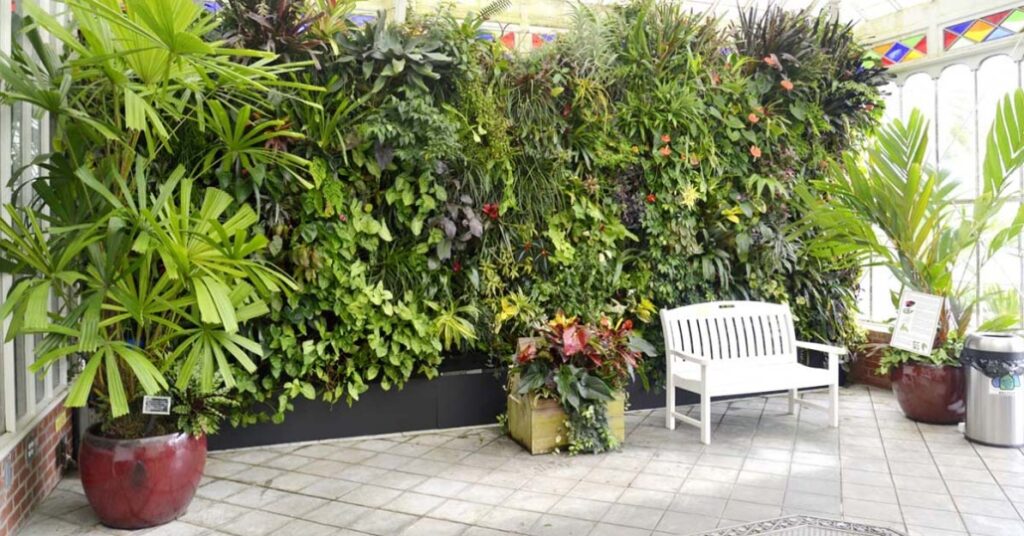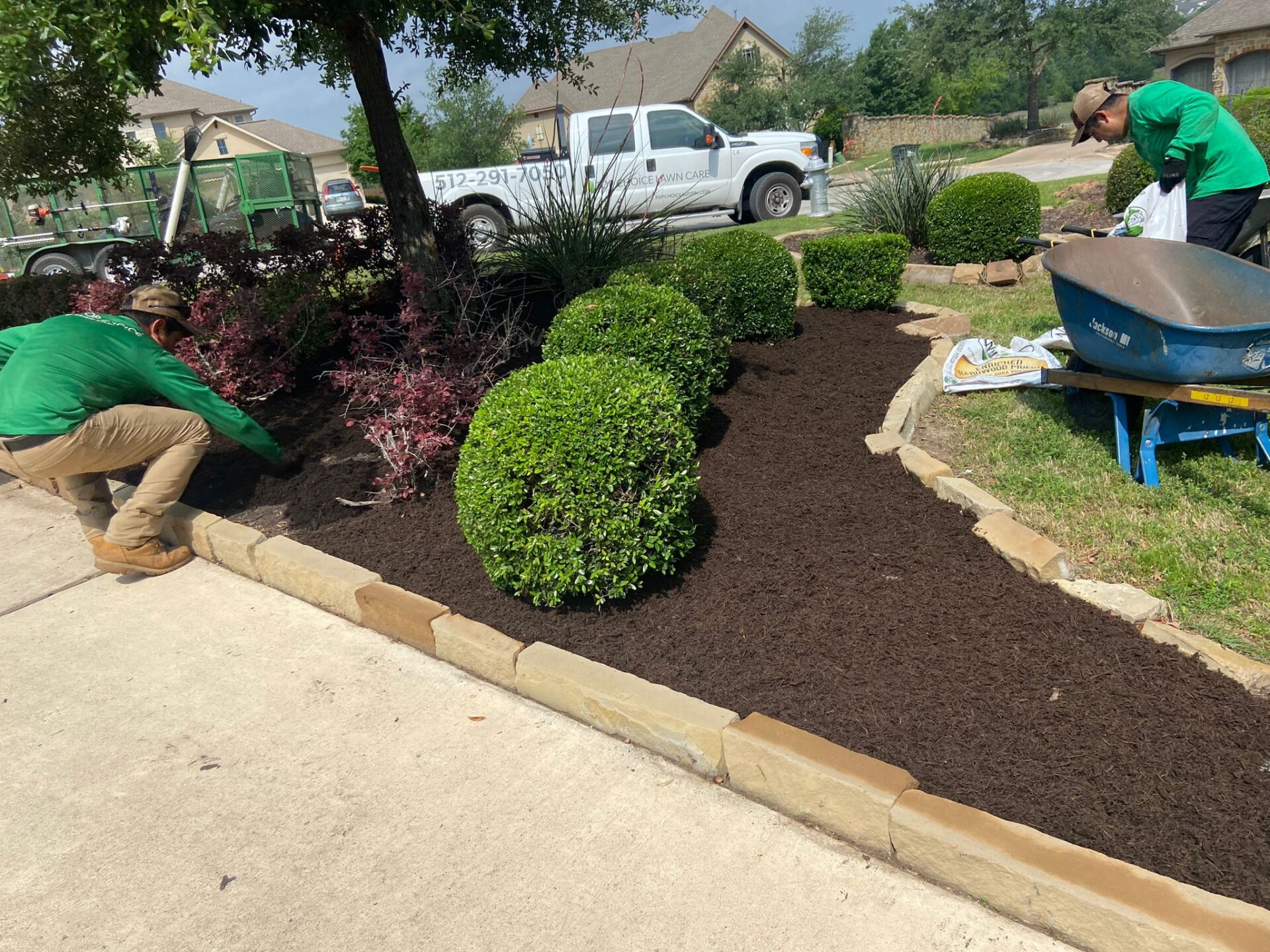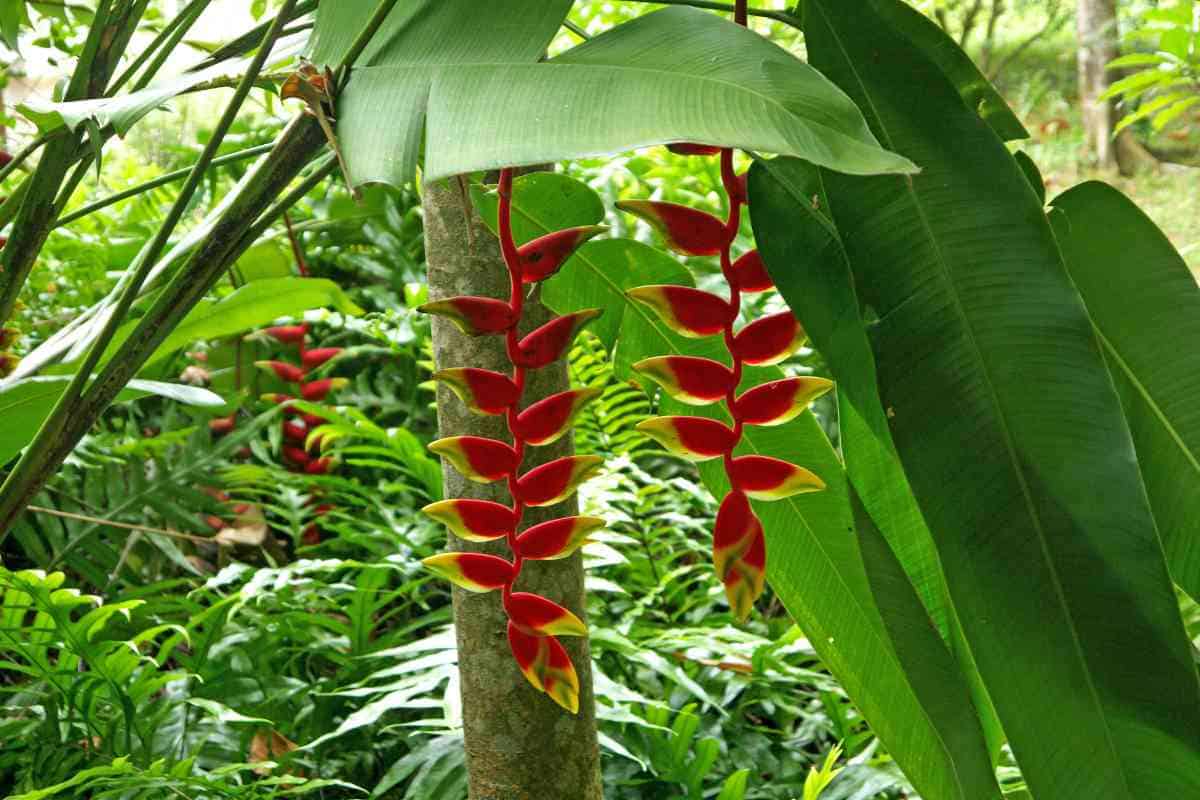
The Allure of Estate Gardens: A Symphony of Green
Owning a large estate is a dream for many, a testament to success and a canvas for creating something truly extraordinary. And what elevates an estate from simply being a large property to a breathtaking sanctuary? The answer, in many ways, lies in the landscape, particularly the plants. Choosing plants for large estates is not merely a matter of aesthetics; it’s an art, a science, and a deeply personal expression. It’s about crafting a living masterpiece that evolves with the seasons, providing a haven for both the residents and the local ecosystem. This guide delves into the intricacies of selecting the perfect plants, ensuring your estate garden thrives and reflects your vision.
Understanding the Estate’s Unique Character
Before you even consider the specific plant varieties, take a moment to understand the unique characteristics of your estate. This preliminary assessment forms the foundation for all your plant choices. Consider the following factors:
Microclimates: A World Within a World
Large estates often encompass a variety of microclimates. Areas exposed to full sun will have vastly different growing conditions compared to shaded areas near buildings or under large trees. Wind patterns, soil composition, and proximity to water bodies also influence microclimates. Observe how sunlight hits different parts of your property throughout the day and year. Note any areas prone to frost or excessive heat. This detailed observation is crucial for matching plants to their ideal conditions.
Soil Analysis: The Foundation of Growth
Soil is the lifeblood of any garden. A soil test will reveal its pH level, nutrient content, and texture. This information is invaluable in selecting plants that will thrive in your specific soil conditions. For example, some plants prefer acidic soil, while others thrive in alkaline conditions. The presence of essential nutrients like nitrogen, phosphorus, and potassium is also crucial for healthy growth. Consider amending the soil with compost, organic matter, or other soil amendments to improve its fertility and drainage.
Water Availability and Drainage: Life’s Essential Element
Water is, of course, essential for plant survival. Assess your estate’s water sources, including rainfall, well water, and irrigation systems. Determine the availability of water for each area of the garden. Poor drainage can lead to root rot and other problems. Observe how water drains from different areas after rainfall. Consider incorporating drainage solutions like French drains or swales in areas prone to waterlogging.
Existing Structures and Features: Integrating the Landscape
How do existing structures, such as the house, outbuildings, and hardscaping elements, influence your plant choices? Consider the architectural style of the house and the desired aesthetic of the garden. Do you want to soften the lines of the building with climbing vines? Integrate the garden with existing patios, walkways, and other features? Think about how the plants will complement and enhance the overall design.
Planning the Estate Garden: A Vision Takes Shape
Once you’ve assessed the estate’s characteristics, you can begin planning the garden’s layout and plant selection. This stage involves defining your goals, considering the overall aesthetic, and choosing plants that align with both.
Defining Your Goals: What Do You Envision?
What do you want your estate garden to achieve? Do you envision a formal garden with manicured hedges and symmetrical planting schemes? A naturalistic landscape that blends seamlessly with the surrounding environment? A productive garden that provides fresh fruits, vegetables, and herbs? Or perhaps a combination of these elements? Your goals will significantly influence your plant choices.
Choosing an Aesthetic: Style and Substance
The aesthetic of your garden should reflect your personal style and the overall character of the estate. Some popular garden styles include:
- Formal Gardens: Characterized by symmetry, geometric shapes, and precisely manicured plants. These gardens often feature hedges, topiary, and formal flower beds.
- Informal Gardens: Embrace a more relaxed and naturalistic approach. They often feature a mix of plant sizes, shapes, and textures, creating a sense of wild beauty.
- Cottage Gardens: Overflowing with a colorful mix of flowering plants, herbs, and vegetables. They evoke a sense of charm and abundance.
- Japanese Gardens: Emphasize tranquility and harmony with nature, often incorporating elements like water features, rocks, and carefully pruned plants.
- Mediterranean Gardens: Feature plants that thrive in warm, dry climates, such as olive trees, lavender, and rosemary.
Plant Selection: The Heart of the Matter
Now comes the exciting part: choosing the plants! Consider the following factors when selecting plants for your estate:
- Hardiness Zones: Ensure that the plants you choose are suitable for your local climate and hardiness zone. This information is readily available online and in plant catalogs.
- Sunlight Requirements: Match plants to the amount of sunlight they need. Some plants thrive in full sun, while others prefer shade.
- Soil Preferences: Select plants that are compatible with your soil conditions.
- Water Requirements: Consider the water needs of each plant and group plants with similar needs together.
- Mature Size: Factor in the mature size of the plants to ensure they have enough space to grow and don’t overcrowd each other.
- Growth Rate: Consider the growth rate of the plants, especially if you want to create a quickly established garden or prefer a slower, more controlled approach.
- Maintenance Requirements: Choose plants that align with your available time and resources for maintenance. Some plants require more pruning, fertilizing, and pest control than others.
- Aesthetic Appeal: Select plants that you find visually appealing and that complement the overall design of your garden. Consider factors like color, texture, form, and seasonal interest.
- Wildlife Value: Consider selecting plants that attract beneficial insects, birds, and other wildlife. This adds to the biodiversity and ecological value of your garden.
Planting Strategies for Large Estates: Spreading Beauty Across the Landscape
With your plant selections made, it’s time to consider the planting strategies that will bring your vision to life.
Creating Focal Points: Drawing the Eye
Focal points are key elements that draw the eye and create visual interest. They can be a specimen tree, a striking sculpture, a water feature, or a mass planting of colorful flowers. Strategically placed focal points help to guide the eye through the garden and create a sense of depth and perspective.
Layering and Textural Contrast: Adding Depth and Interest
Layering involves planting plants of different heights and textures to create depth and visual interest. Combine tall trees with understory trees, shrubs, perennials, and groundcovers. Contrast different textures, such as the smooth leaves of a hosta with the spiky foliage of a yucca. This interplay of heights and textures adds richness and complexity to the garden.
Using Color Effectively: A Palette of Possibilities
Color is a powerful tool for creating mood and visual impact. Consider the color palette of your garden. Do you prefer a monochromatic scheme with a single color, a complementary scheme with contrasting colors, or a harmonious scheme with a variety of colors? Use color to create focal points, guide the eye, and evoke different emotions.
Seasonal Interest: A Year-Round Spectacle
To ensure that your garden is beautiful throughout the year, select plants that provide seasonal interest. This includes plants that bloom at different times of the year, plants with colorful foliage in the fall, and plants with interesting bark or berries in the winter. This ensures that your garden is always evolving and providing something new to admire.
Grouping Plants Strategically: Matching Needs, Maximizing Impact
Group plants with similar needs, such as sunlight, water, and soil preferences, together. This makes it easier to care for the garden and ensures that each plant thrives. Grouping plants also creates a more cohesive and visually pleasing effect. Consider creating drifts of flowering perennials or mass plantings of shrubs for a dramatic impact.
Plant Recommendations for Large Estates: A Curated Selection
Here are some plant recommendations for large estates, categorized by their primary function and aesthetic appeal. Remember to adapt these suggestions to your specific climate, soil conditions, and personal preferences.
Trees: The Foundation of the Landscape
- Specimen Trees:
- Oak (Quercus spp.): Majestic and long-lived, oaks provide shade, structure, and habitat for wildlife. Choose a variety suited to your climate.
- Maple (Acer spp.): Known for their vibrant fall foliage, maples offer beauty and shade. Consider the size and growth habit when selecting a variety.
- Beech (Fagus spp.): Elegant trees with smooth bark and attractive foliage. They thrive in well-drained soil and provide a stately presence.
- Shade Trees:
- Linden (Tilia spp.): Provides dense shade and fragrant flowers.
- Elm (Ulmus spp.): Choose disease-resistant varieties to avoid Dutch elm disease.
- Birch (Betula spp.): Known for their striking bark, birches add beauty and visual interest.
- Flowering Trees:
- Dogwood (Cornus spp.): Offers beautiful spring blooms and attractive foliage.
- Cherry (Prunus spp.): Provides a stunning display of spring blossoms.
- Crabapple (Malus spp.): Offers a variety of flower colors and fruit.
Shrubs: Structure and Texture
- Evergreen Shrubs:
- Holly (Ilex spp.): Provides year-round interest and berries.
- Rhododendron (Rhododendron spp.): Offers beautiful spring blooms and lush foliage.
- Boxwood (Buxus spp.): Ideal for creating hedges and formal gardens.
- Deciduous Shrubs:
- Hydrangea (Hydrangea spp.): Offers large, showy blooms.
- Lilac (Syringa spp.): Provides fragrant spring blooms.
- Rose (Rosa spp.): A classic choice for adding beauty and fragrance.
Perennials: Color and Diversity
- Sun-Loving Perennials:
- Coneflower (Echinacea spp.): Attracts pollinators and offers vibrant blooms.
- Black-Eyed Susan (Rudbeckia hirta): Provides cheerful yellow flowers.
- Lavender (Lavandula spp.): Offers fragrant flowers and attracts bees.
- Shade-Loving Perennials:
- Hostas (Hosta spp.): Provide a variety of foliage colors and textures.
- Ferns (various species): Add texture and elegance to shady areas.
- Astilbe (Astilbe spp.): Offers feathery plumes of flowers.
Groundcovers: Filling the Gaps
- Creeping Thyme (Thymus serpyllum): Provides a fragrant, low-growing groundcover.
- Pachysandra (Pachysandra terminalis): Thrives in shade and provides a dense, evergreen cover.
- Sedum (Sedum spp.): Offers a variety of textures and colors.
Vines: Adding Vertical Interest
- Wisteria (Wisteria spp.): Offers stunning spring blooms and a cascading effect.
- Clematis (Clematis spp.): Provides a variety of flower colors and shapes.
- Honeysuckle (Lonicera spp.): Offers fragrant flowers and attracts hummingbirds.
Maintenance and Care: Nurturing Your Green Masterpiece
Choosing the right plants is only the first step. Regular maintenance and care are essential to ensure that your estate garden thrives and remains a source of beauty for years to come.
Watering: Providing Life’s Sustenance
Water plants regularly, especially during dry periods. Water deeply and less frequently, rather than shallowly and often, to encourage deep root growth. Consider using soaker hoses or drip irrigation systems to deliver water directly to the roots and conserve water.
Fertilizing: Nourishing Growth
Fertilize plants regularly to provide them with the nutrients they need to grow and thrive. Use a balanced fertilizer that is appropriate for the specific needs of your plants. Follow the manufacturer’s instructions carefully.
Pruning: Shaping and Maintaining
Prune plants regularly to shape them, remove dead or damaged branches, and encourage new growth. The timing and method of pruning depend on the type of plant. Research the specific pruning needs of each plant in your garden.
Pest and Disease Control: Protecting Your Investment
Inspect plants regularly for pests and diseases. Take action promptly to control any problems. Use organic pest control methods whenever possible to minimize the impact on beneficial insects and the environment.
Weeding: Keeping the Competition at Bay
Weed regularly to prevent weeds from competing with your plants for nutrients, water, and sunlight. Mulch around plants to suppress weeds and retain moisture in the soil.
Mulching: Protecting and Enriching
Mulch around plants to suppress weeds, retain moisture, and improve the soil. Use organic mulches like wood chips, bark, or compost. Replenish the mulch as needed.
Embracing Sustainability: Creating an Eco-Friendly Estate Garden
In addition to aesthetic considerations, consider incorporating sustainable practices into your estate garden to minimize its environmental impact.
Water Conservation: Using Water Wisely
Conserve water by using drought-tolerant plants, installing efficient irrigation systems, and collecting rainwater. Mulch around plants to retain moisture in the soil.
Composting: Recycling Organic Matter
Compost yard waste and kitchen scraps to create nutrient-rich soil amendments. Composting reduces waste and improves the health of your soil.
Reducing Chemical Use: Protecting the Environment
Minimize the use of chemical fertilizers, pesticides, and herbicides. Choose organic alternatives whenever possible. Encourage beneficial insects and other wildlife to control pests naturally.
Creating Wildlife Habitat: Supporting Biodiversity
Plant native plants to attract pollinators, birds, and other wildlife. Provide water sources, shelter, and nesting sites. Avoid using pesticides that can harm wildlife.
The Ongoing Journey: Evolution and Adaptation
An estate garden is never truly finished; it’s an ongoing journey of evolution and adaptation. As your plants mature, you may need to adjust your planting schemes, add new plants, or remove existing ones. Be open to experimenting with different plant combinations and design ideas. Continuously observe your garden, learn from your experiences, and adapt your strategies as needed. Embrace the process of creating and nurturing your living masterpiece.
Beyond the Basics: Elevating the Estate Garden Experience
To truly elevate the experience of your estate garden, consider these additional elements:
Outdoor Living Spaces: Integrating Comfort and Beauty
Create outdoor living spaces that seamlessly blend with the garden, such as patios, decks, and outdoor kitchens. These spaces provide areas for relaxation, entertainment, and enjoying the beauty of the surrounding landscape.
Water Features: Adding Tranquility and Movement
Incorporate water features like fountains, ponds, or streams to add tranquility, movement, and visual interest to the garden. Water features also provide habitat for wildlife and create a soothing ambiance.
Lighting: Extending the Enjoyment
Install landscape lighting to illuminate pathways, highlight plants, and create a magical atmosphere at night. Consider using low-voltage lighting to conserve energy and minimize light pollution.
Art and Sculpture: Adding Personality and Style
Integrate art and sculpture throughout the garden to add personality and style. Choose pieces that complement the overall design and reflect your personal taste.
The Importance of Professional Guidance: Expertise for Your Estate
Designing and maintaining a large estate garden can be a complex undertaking. Consider seeking professional guidance from experienced landscape architects, designers, and horticulturists. They can provide expert advice on plant selection, design, installation, and maintenance, ensuring that your garden thrives and reflects your vision. Their expertise can save you time, money, and frustration in the long run.
Conclusion: Cultivating a Legacy of Beauty
Choosing plants for large estates is an investment in beauty, sustainability, and personal expression. By carefully considering the unique characteristics of your estate, defining your goals, and selecting plants that thrive in your specific conditions, you can create a garden that is a source of joy, inspiration, and connection to nature. Embrace the journey, enjoy the process, and cultivate a legacy of beauty that will endure for generations to come.

